When textile artist Darren Ball received a stack of vintage Stitchcraft magazines from a friend, neither of them realised the profound impact this gift would have.
These treasured journals, first published in the 1930s, became a catalyst for Darren’s creative journey, their images of so-called ‘women’s work’ sparking his imagination.
He turned to textiles and, working intuitively, began to embroider and embellish rich, jewel-like vignettes, incorporating found and repurposed fabrics, or vintage items such as old handkerchiefs.
Years later he’s still inspired by those magazines. The domestic scale of his work resonates with the traditional domestic pastimes they championed, and reflects his interest in the relationship between making and well-being.
Although Darren looks to bygone times for inspiration, his artworks couldn’t be more contemporary. Find out how he developed a unique approach to exploring narratives through textile art.
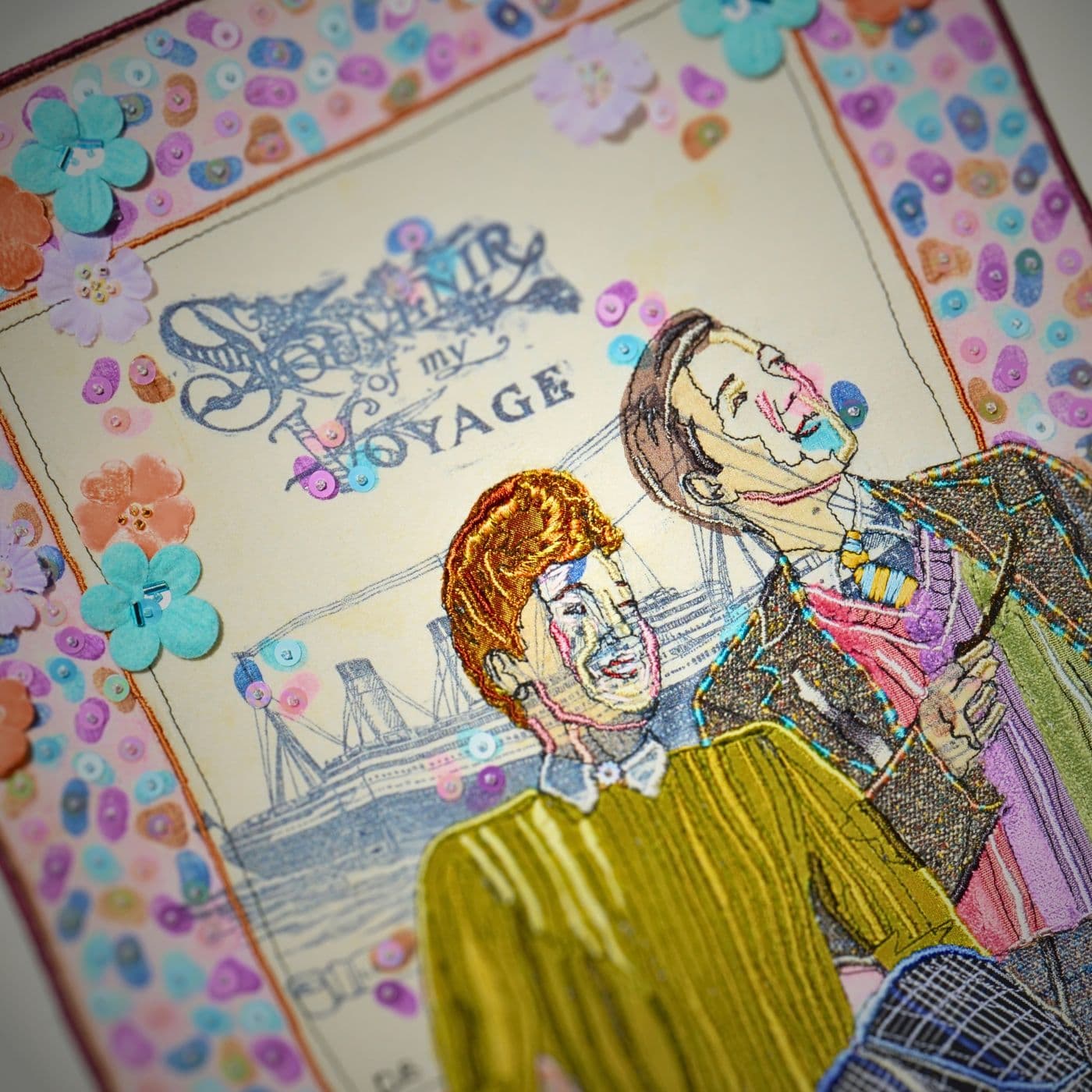
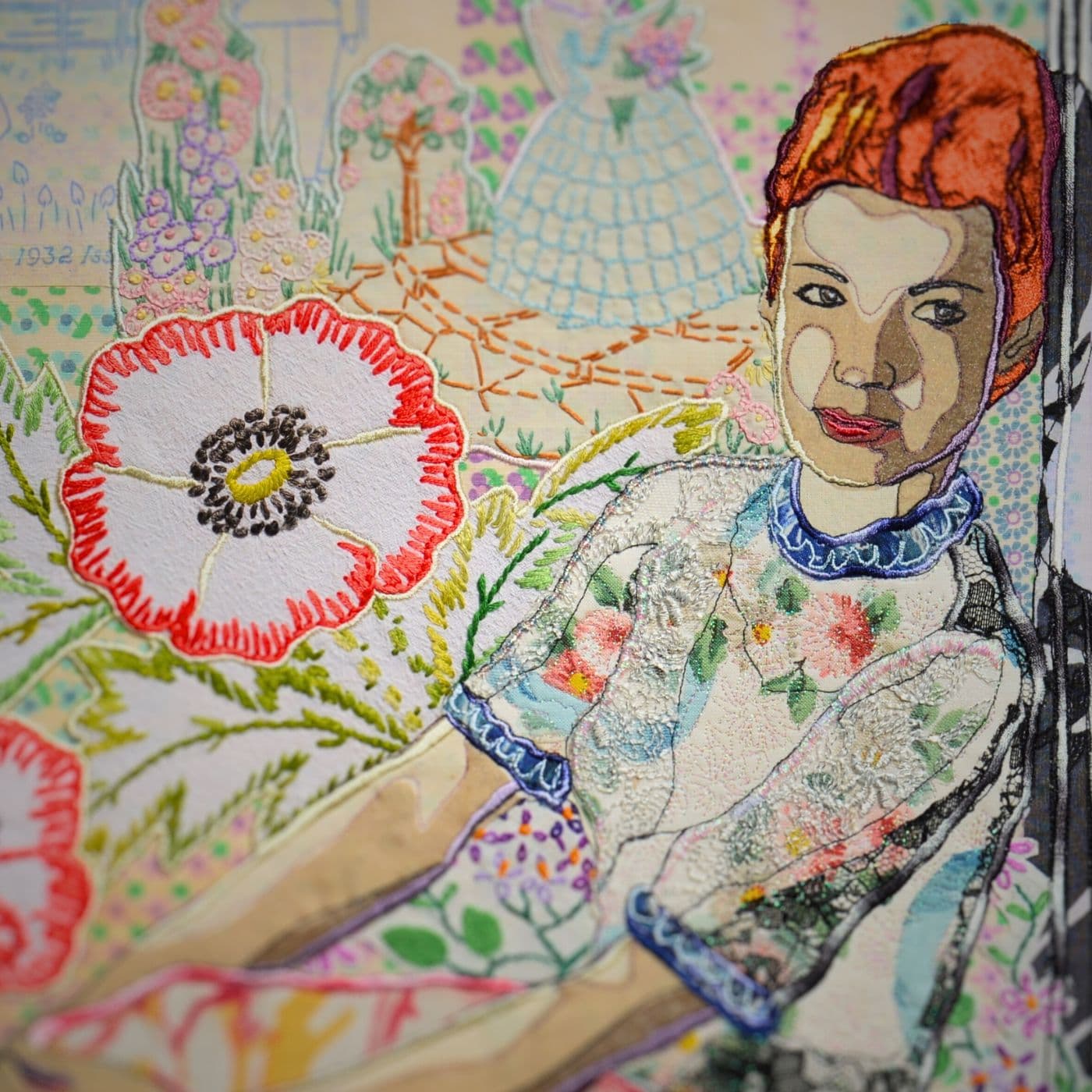
Darren Ball: I love exploring textile surface qualities and bringing them together – silk, satin, velvet, sequins, beads and other embellishments – to create a play of light on the materials. I think it is this, rather than a tactile response to textiles, that I particularly enjoy.
My work is domestic and intimate in scale. It encourages closer inspection and consideration. Created on a domestic sewing machine, I use vintage handkerchiefs or textiles as the canvas, and my narratives are fed by their textile qualities.
My collection of magazines and ephemera is central to my work and adds greatly to its individuality. My pieces reference the domestic making of the 1930s and 40s and the current recognition of the importance of well-being and making.
I am particularly interested in the knitting, hand embroidery and fashion found in magazines of that period.
“I exploit these images to create my own narratives from imagination or memory.”
Darren Ball, Textile artist
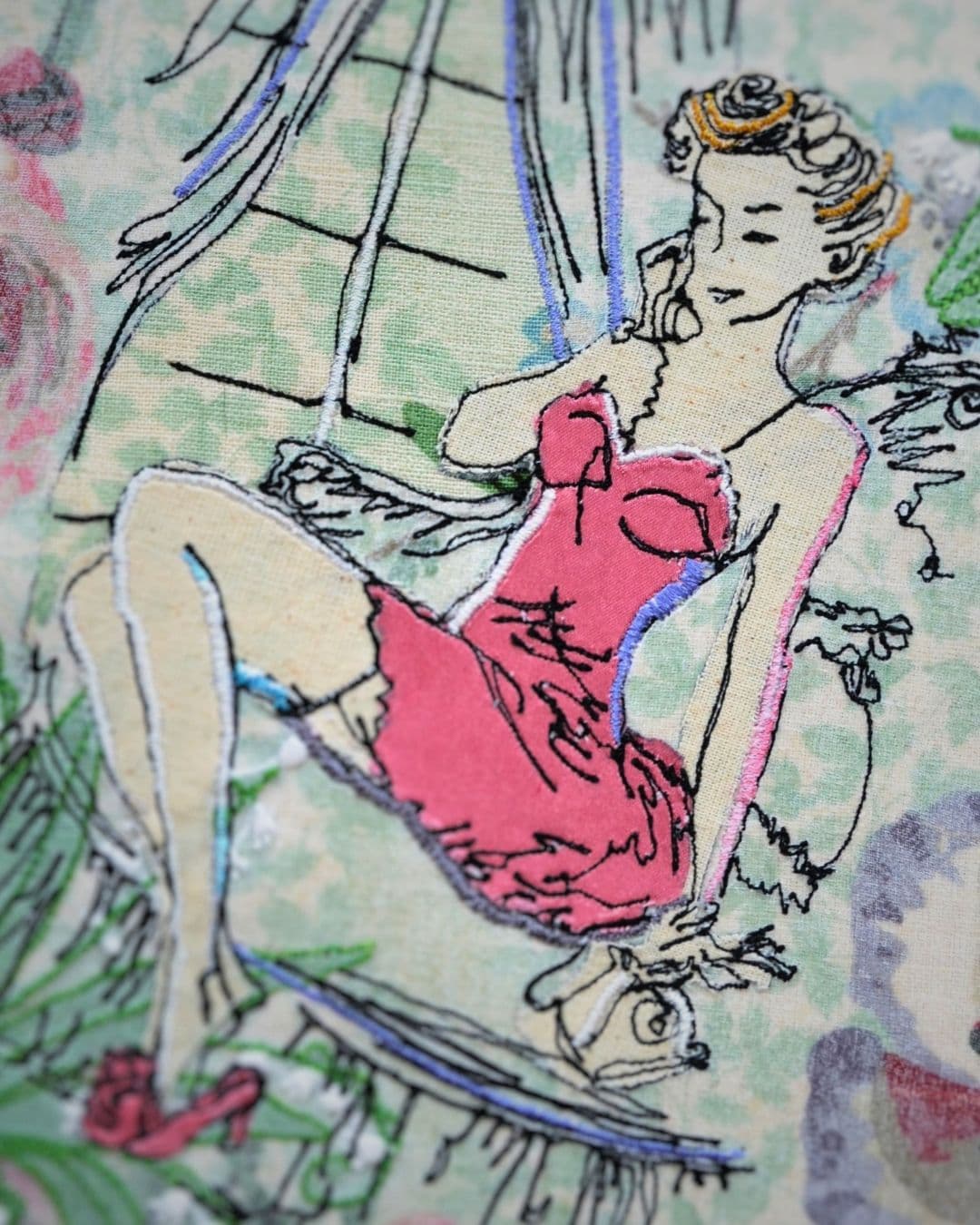
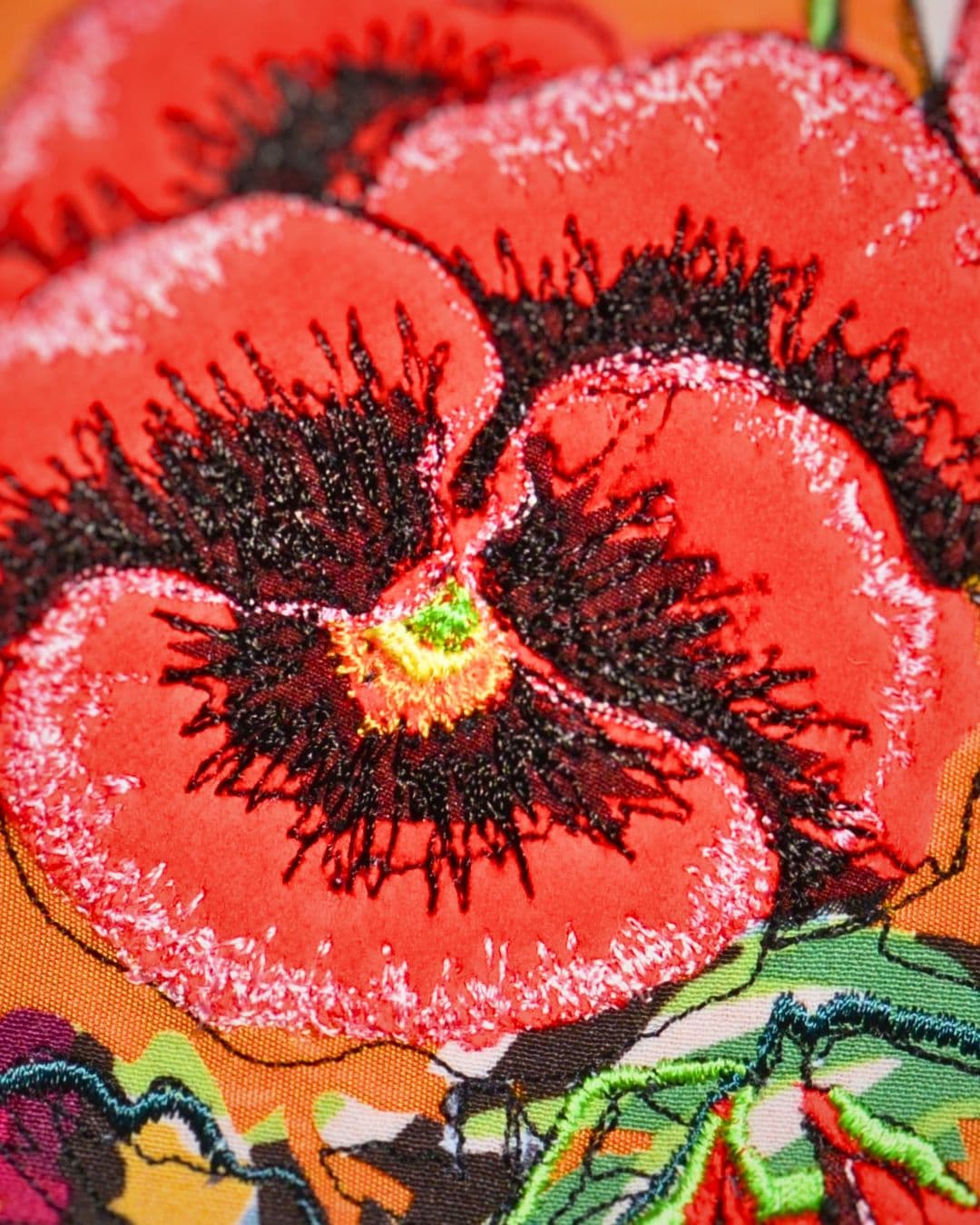
Vintage inspiration
My artwork is populated by figures taken from my collection of vintage Stitchcraft magazines given to me by a friend and fellow teacher. They were published from the 1930s onwards and cover all aspects of women’s domestic life.
I had never seen knitting magazines of that age before. I was amazed that they had survived and been treasured for so long. I discovered that they had been kept because there were so many memories tied up in them – hours spent sewing with mothers, sisters and grandmothers – and the intimacy of that shared time.
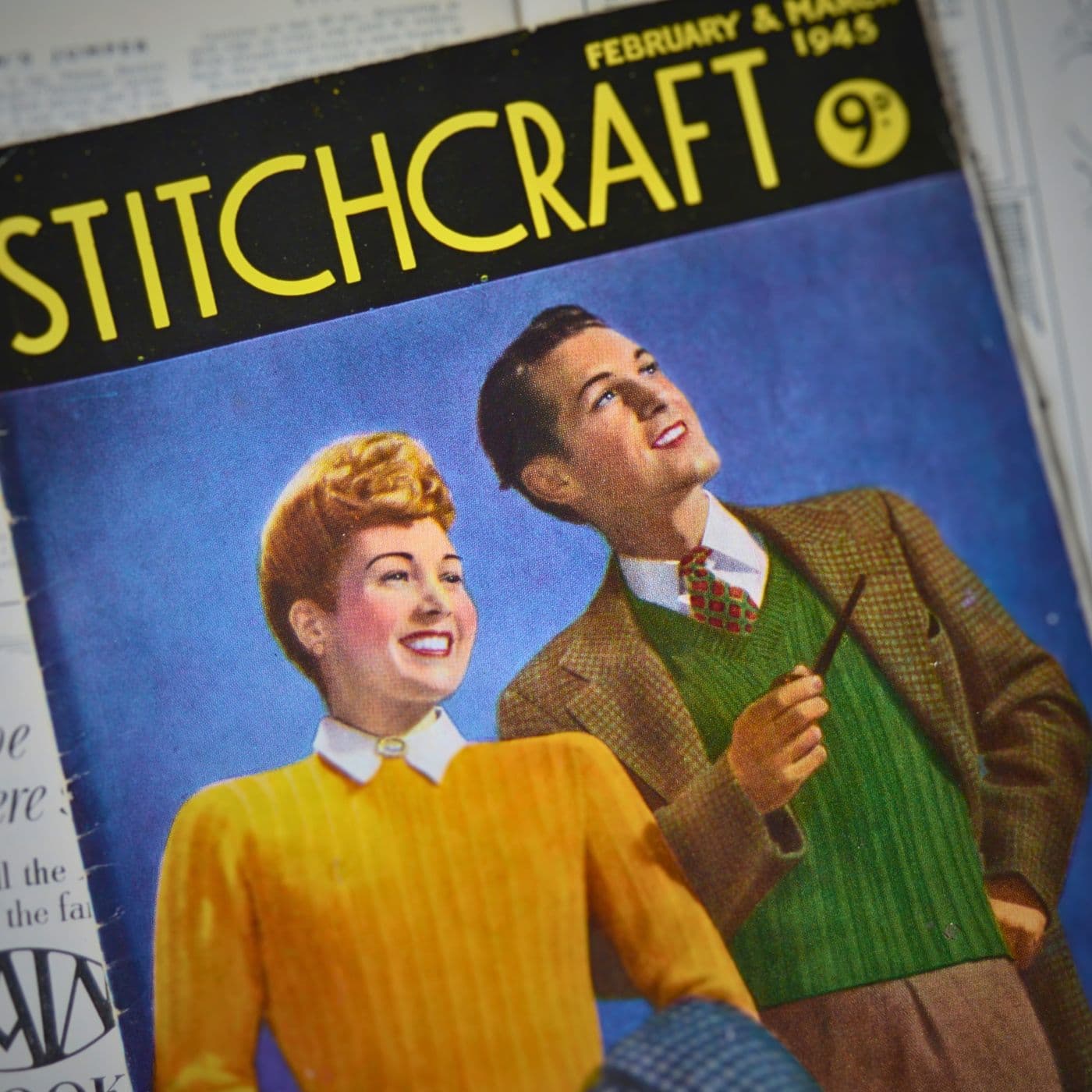
The draw of domestic life
As a knitter, I loved the beautiful, fitted garments of the period. The magazines provided a window into the everyday lives of women at home in that era.
The magazines and their content formed an intriguing link, bringing me back to the knit that I had studied previously and a new way of using that knowledge.
I found I was much more interested in domestic life and what was often known as ‘women’s work’, and the way it related to my life, rather than any more grandiose subject matter.
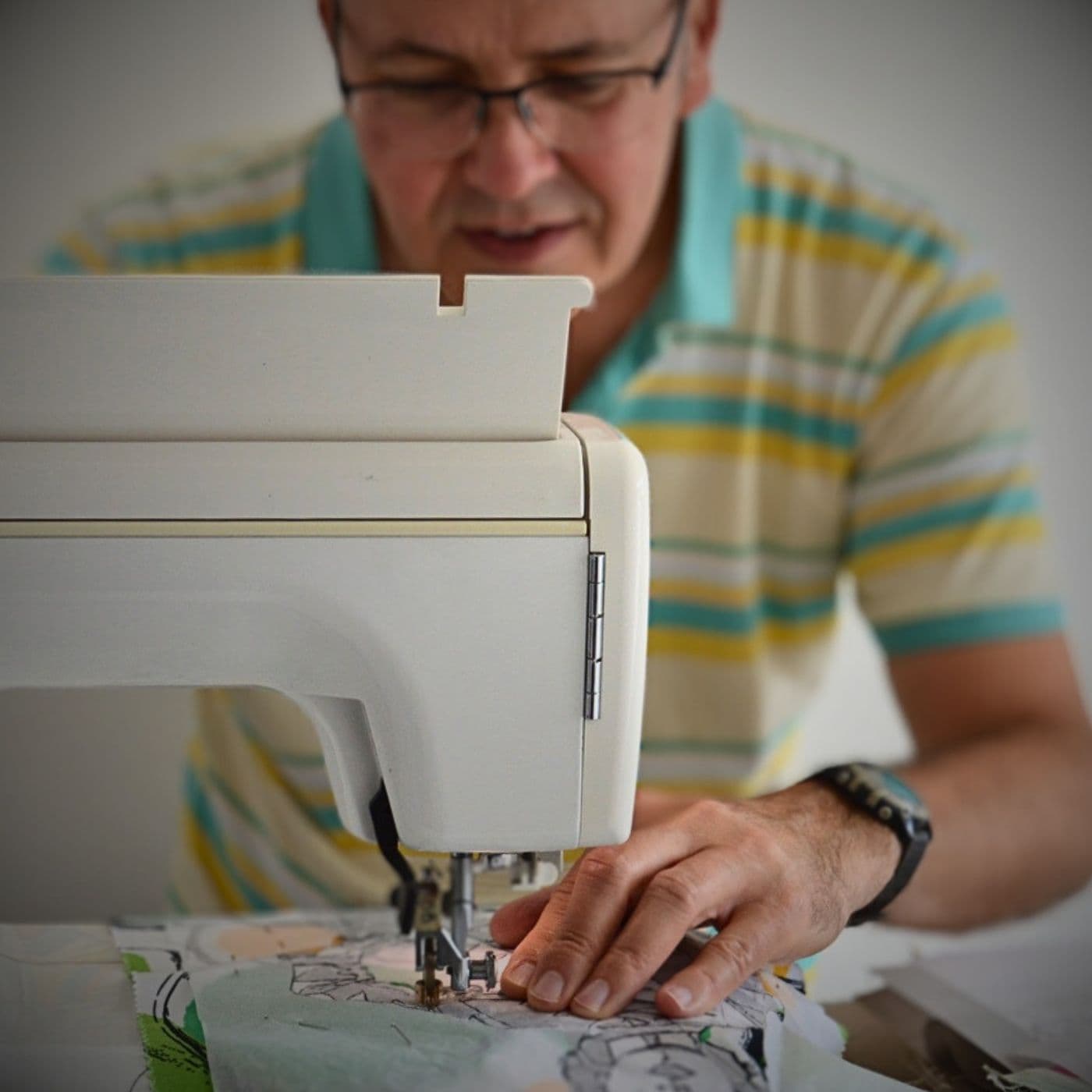
A full-time practice
After many years teaching fine art and textiles, having trained in fashion textiles, specialising in hand knit, I now work as a full-time artist. My practice is underpinned by meticulous craftsmanship.
I explore hand knit, appliqué and machine embroidery techniques to achieve my imagery – bringing together methods of making learned over many years. I don’t use any digital embroidery, rather I control the sewing machine with artistry to create completely bespoke pieces. I respond strongly to the materiality of textiles.
“Through my use of vintage magazines, I have found a new visual language – referencing the past in a contemporary way.”
Darren Ball, Textile artist
Stylistically, I am influenced by the fashion drawings of the 1930s and 40s and their economical use of line, their relationship to free embroidery and their relevance to the Stitchcraft magazines.
I am particularly inspired by the illustrations of Carl Erickson, Christian Bérard and René Gruau. I also love the domestic interior paintings of the artist Edouard Vuillard for his use of colour, pattern and the intimacy of his work.
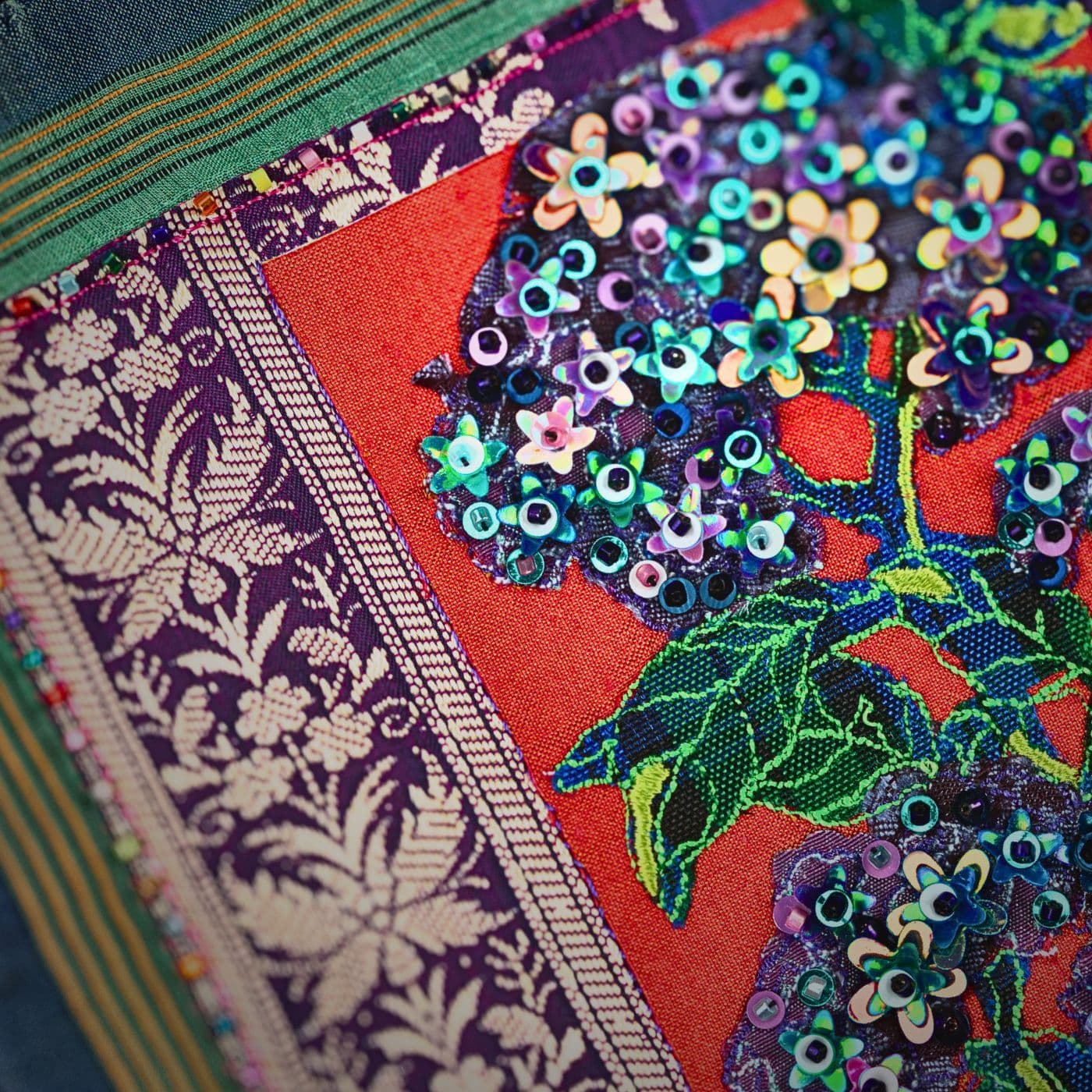
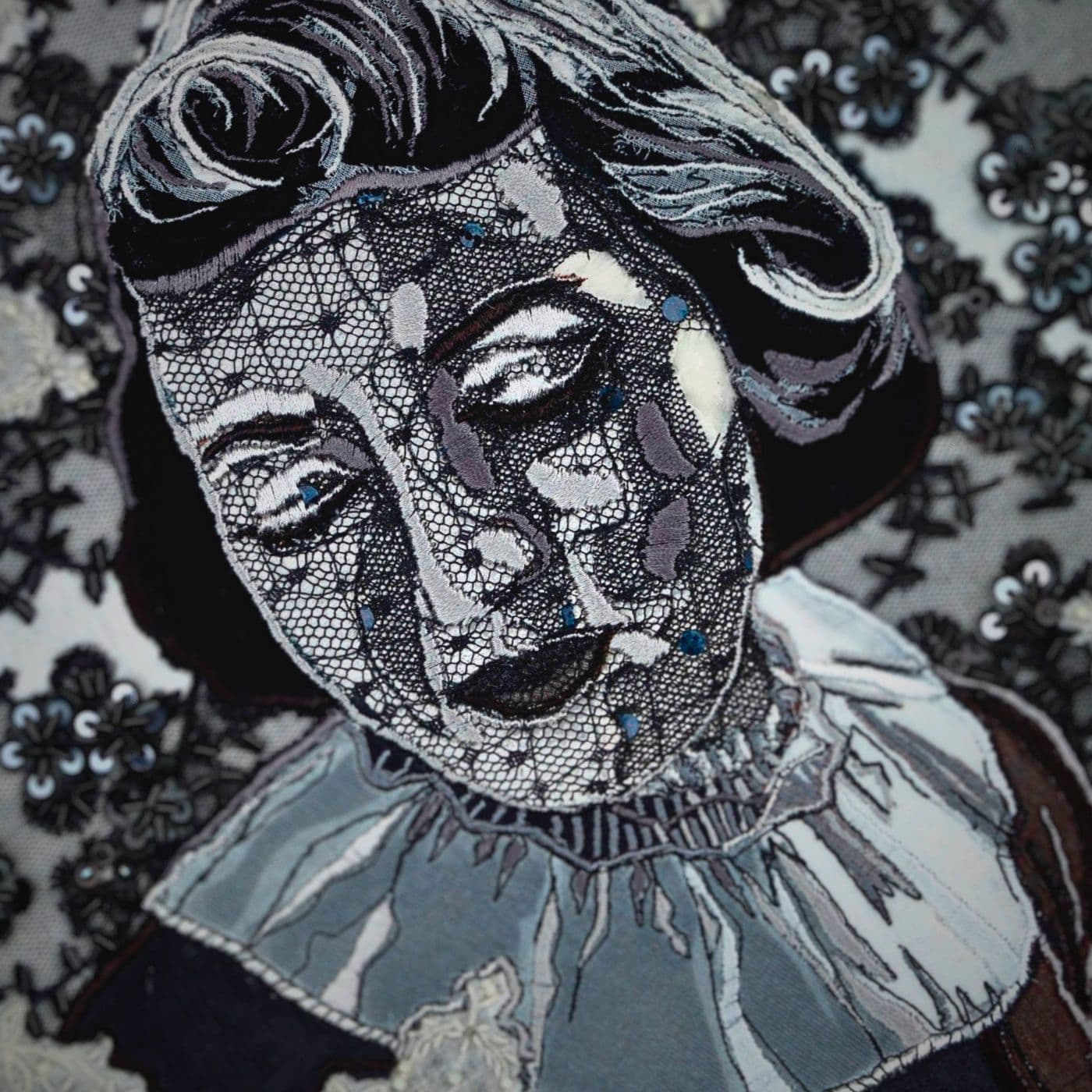
Tools of my trade
I use a basic Janome domestic sewing machine. It’s the same one that I previously used in school with my textile students. The other must-have is my fabrics.
I source fabrics from my stash, often salvaged from fabric bins in school or from discontinued fabric sample books. I also use vintage materials as these often suggest a narrative for my work.
My use of handkerchiefs references past domestic life and imposes a scale at which to work. Handkerchiefs were still commonly used during my childhood. I transform them thereby adding relevance to the present and the future.
I’m really interested in exploring and contrasting textile surface qualities in my work.
I don’t use any paints or dyes but exploit a collected palette of fabrics and threads that I’ve gathered over the years. These provide rich contrasts of surface as well as a uniquely personal colour palette.
“I try to buy as little new material as possible, to be as sustainable as I can.”
Darren Ball, Textile artist
Stitch Club embroidery tips
In my Stitch Club workshop, I demonstrate my approach to appliqué and machine embroidery. With the free machine embroidery, I encourage Stitch Club members to consider how detail can be edited and to explore the use of different weights of line for emphasis. If you work by hand, lines can be created using back stitch or something similar.
I have made the workshop as inclusive as possible, keeping the domestic starting points broad, including suggestions of family photos, gardening, food, outings and so on.
I hope that it will give those members new to the processes the confidence to have a go. For those who have some experience of appliqué and machine embroidery, I’m hoping it will encourage them to explore my crisp, graphic approach.
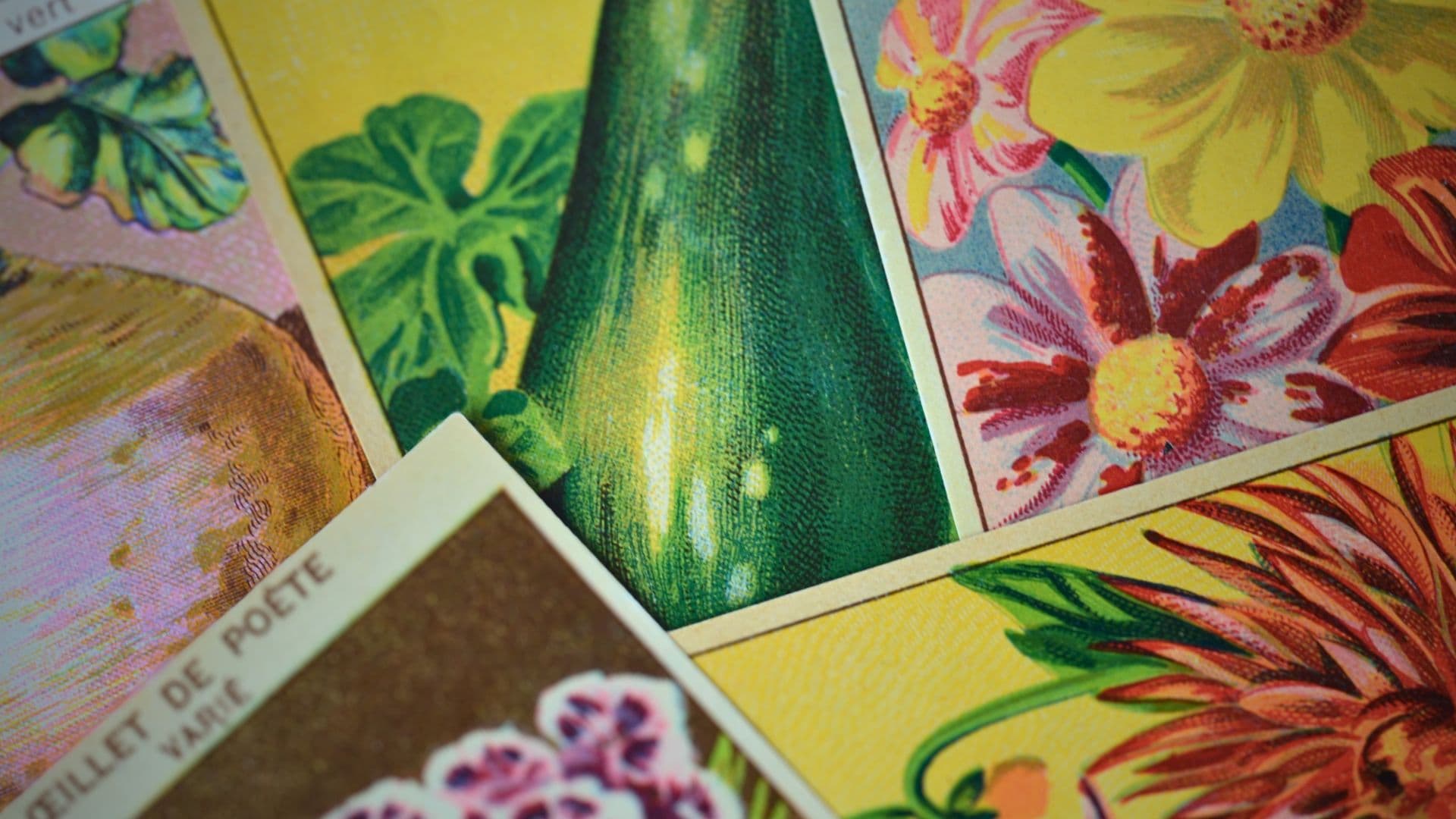
How I work
Everything starts with an idea. I keep a note of these on my phone so I don’t forget them – and they can be saved for a long time before I start on them. I may make work for a particular show or to make use of a handkerchief or fabric that I’ve found.
I’ll look through my collection of Stitchcraft magazines, my vintage French seed pack labels from the 1920s, or whatever subject matter may be appropriate. I choose a selection of images and then narrow them down.
I’ll consider scale and the fabrics I want to use. Then, I simplify the images and bring them together. I hand cut, layer and appliqué the fabrics and add embroidery.
Then I’ll think about how to complete the piece. Usually, I’ll include areas of machine satin stitch to add emphasis and heavier weights of line. Sometimes if a fabric has frayed on the edge, I may use satin stitch to crisp it up.
I don’t do any preliminary drawing but work intuitively into the piece until I feel that it’s complete. I may use beads or sequins for embellishment, enriching the surface further.
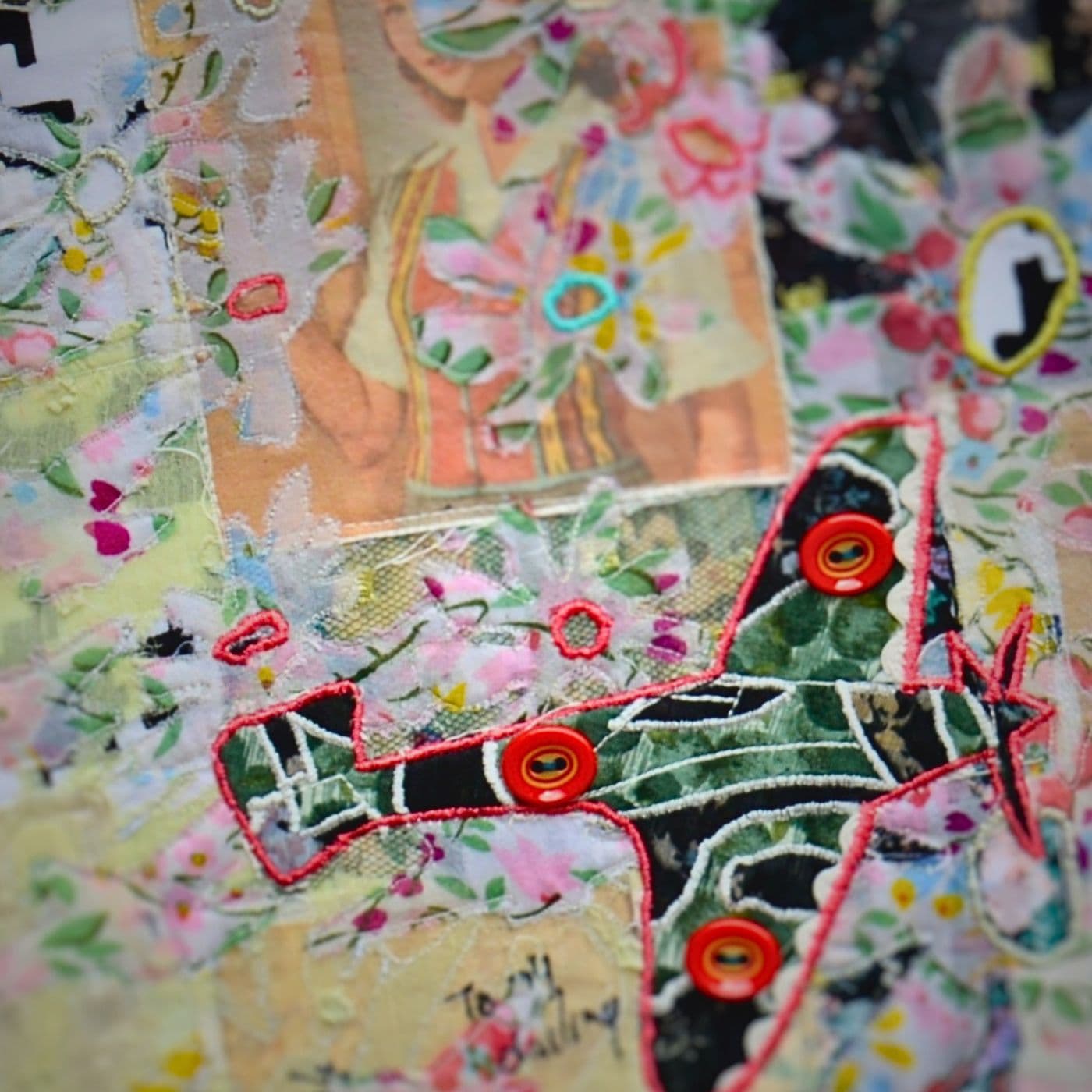
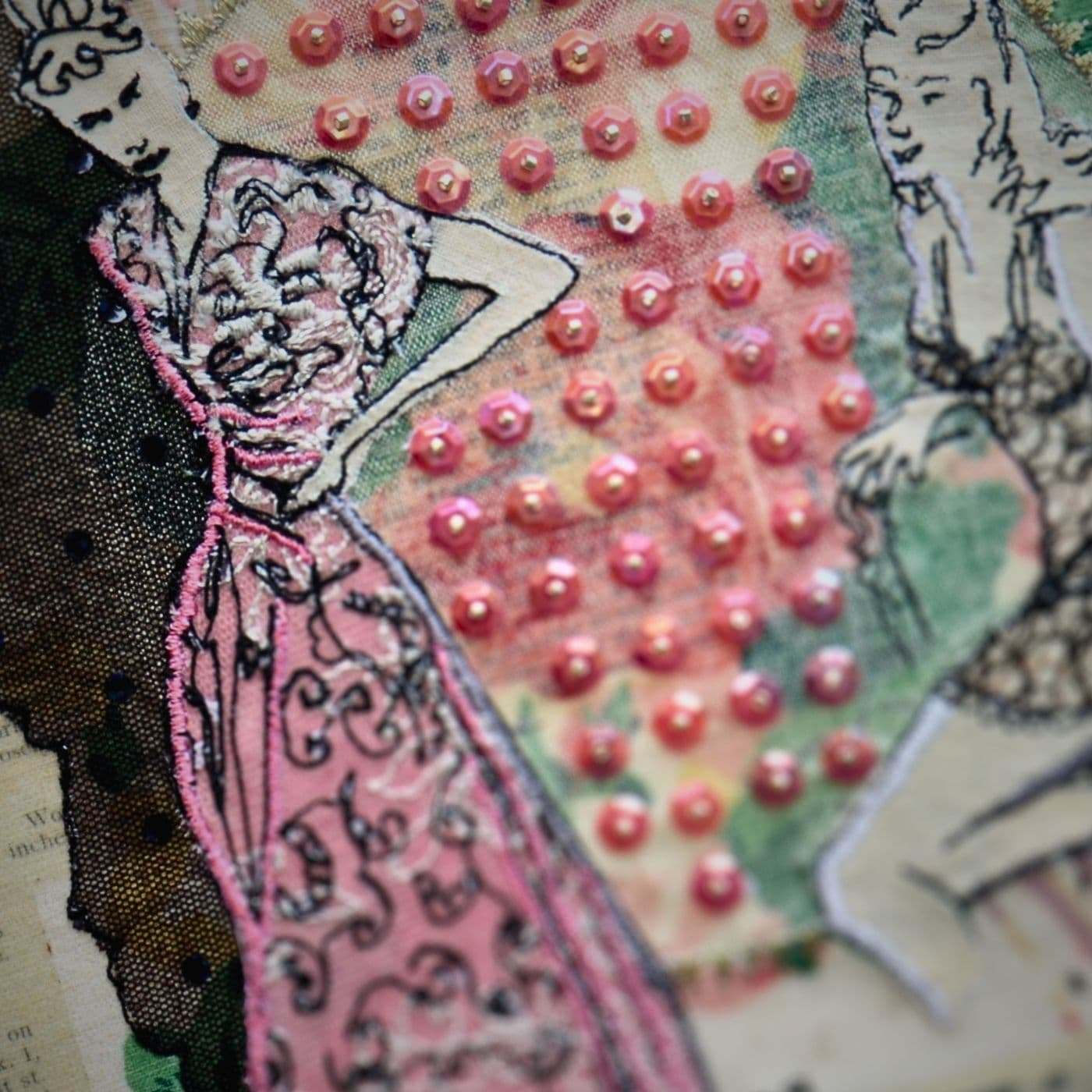
Presentation & framing
How I present my work has developed over the years. I view it as art so I frame and mount it in a contemporary way.
Framing also protects the work and emphasises its precious quality, and it also enhances it aesthetically. Mounting a piece behind glass also draws attention to the textiles.
I emphasise the textile quality by leaving the work unstretched with ripples.
I go to an excellent framer who has a really good eye. She makes sensitive suggestions and is more aware of contemporary approaches than me.
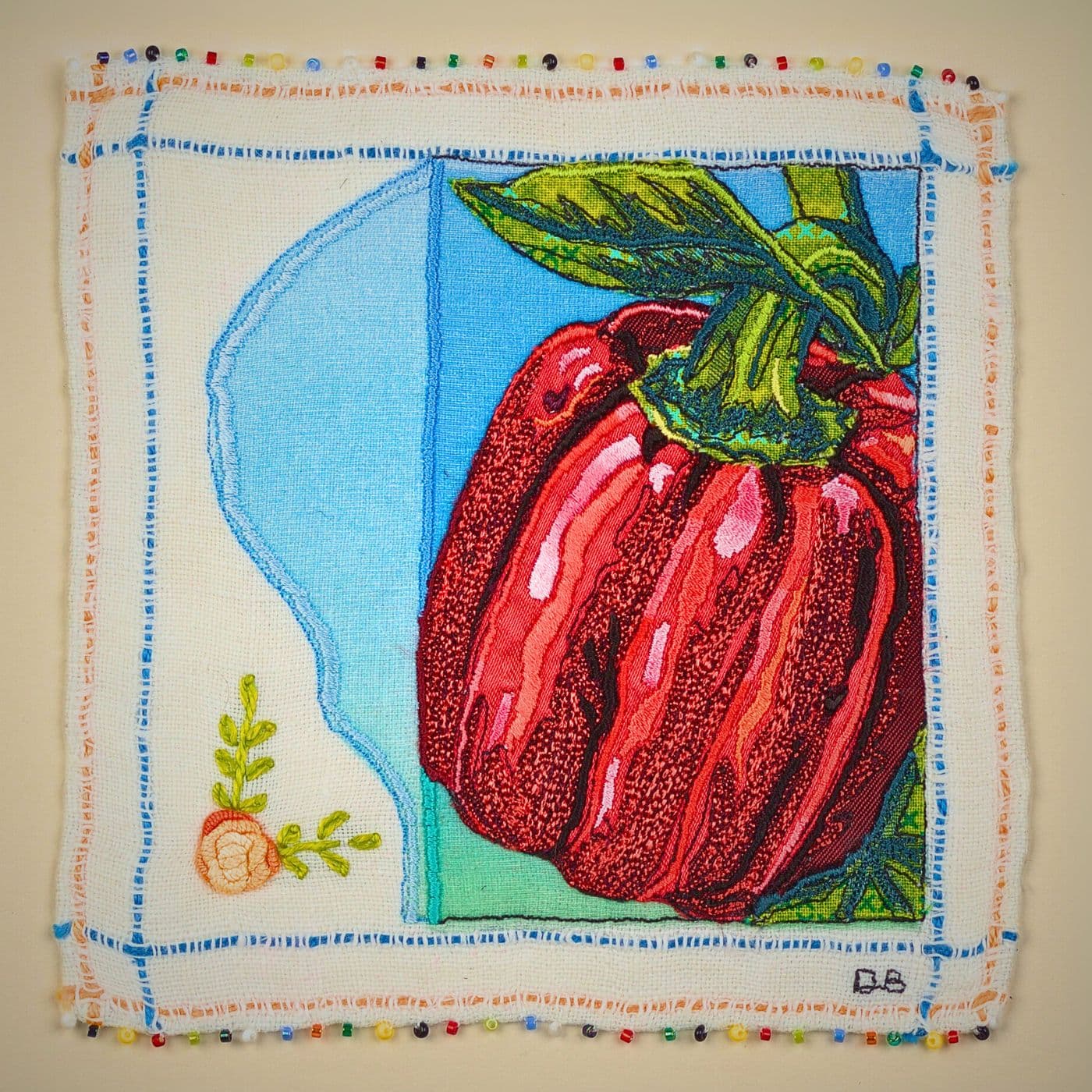
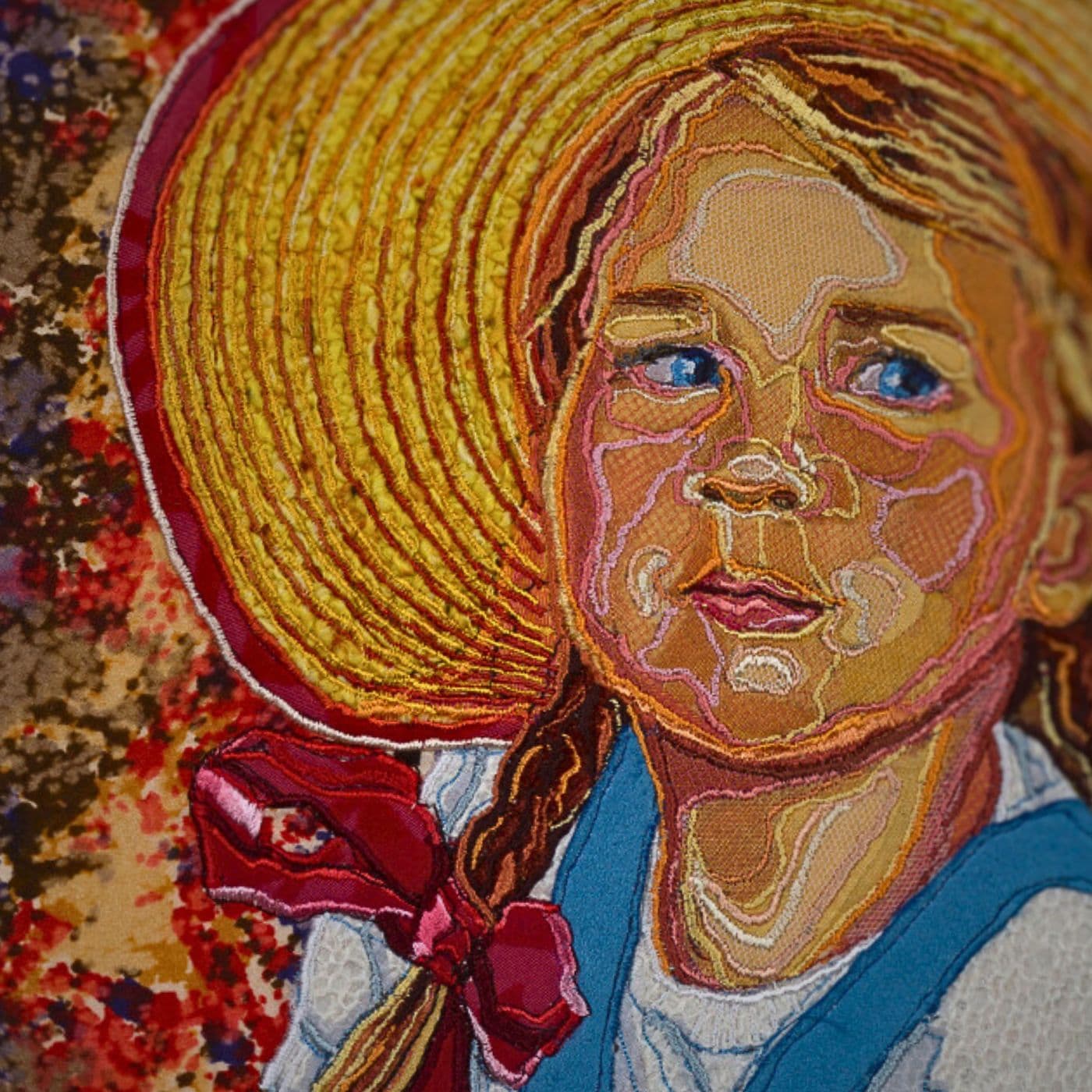
Driven by curiosity
I was initially attracted to textiles through a desire to experiment. I remember being inspired by something I’d seen in a magazine, and experimenting with batik and very simple stitch when I was doing A Level art. We didn’t have lots of textiles at home but we did have those craft magazines in the 1980s that you could collect to make a set.
My mum and dad were interested in crafts and making but not in the usual way. I never saw my mum sew anything but she would French polish or paint models. My dad knitted, did macramé and made pin art in the 1980s and later cross-stitched. Like my parents, I enjoyed making.
“I began to see that working with textiles was a way of achieving results that couldn’t be produced in paint.”
Darren Ball, Textile artist
Pictorial potential
I loved exploring ceramics, jewellery, textiles and painting during my art foundation course. I was always interested in colour, pattern and texture but for me, textiles had the greatest possibilities. I experimented with weave, simple dyeing and embellishment.
I began looking at degree courses and particularly Middlesex Polytechnic (now Middlesex University). It offered a BA Hons Fashion Textiles focusing on knit, weave and woven tapestry but, unlike most textile degrees it didn’t include printed textiles.
When I visited Middlesex, I was stunned by the tapestry work being woven on scaffolding poles. It was bold, ambitious and impressive.
“I discovered the pictorial potential of textiles and using imagery rather than repeated patterns. This was a pivotal point that influenced the art that I make.”
Darren Ball, Textile artist
Making for myself
After a number of years teaching full time, I wanted to make my own work again. I completed an MA in Textile Culture at Norwich School of Art and Design (now Norwich University of the Arts). It was an art-based course as I wanted to exhibit with galleries rather than design for knit. It was there that I began to make textile art.
“I could see the potential of textiles as an expressive medium and how it could be used conceptually.”
Darren Ball, Textile artist
Another important turning point was the decision to start showing and selling my embroidered work. This came about through the same friend, Janis, who had given me the Stitchcraft magazines.
We both taught art full time but decided that if we shared a stand at an art fair we’d have enough work for it. She made hand-built ceramics and I had framed textiles. We both sold pieces and it was the starting point for all my embroidery to date.
I have much to thank Janis for and it was an alliance very much in the spirit of Stitchcraft.
“Judge your artwork’s success by your intentions. Are you pleased with the final result? How can it be developed in the next piece?”
Darren Ball, Textile artist
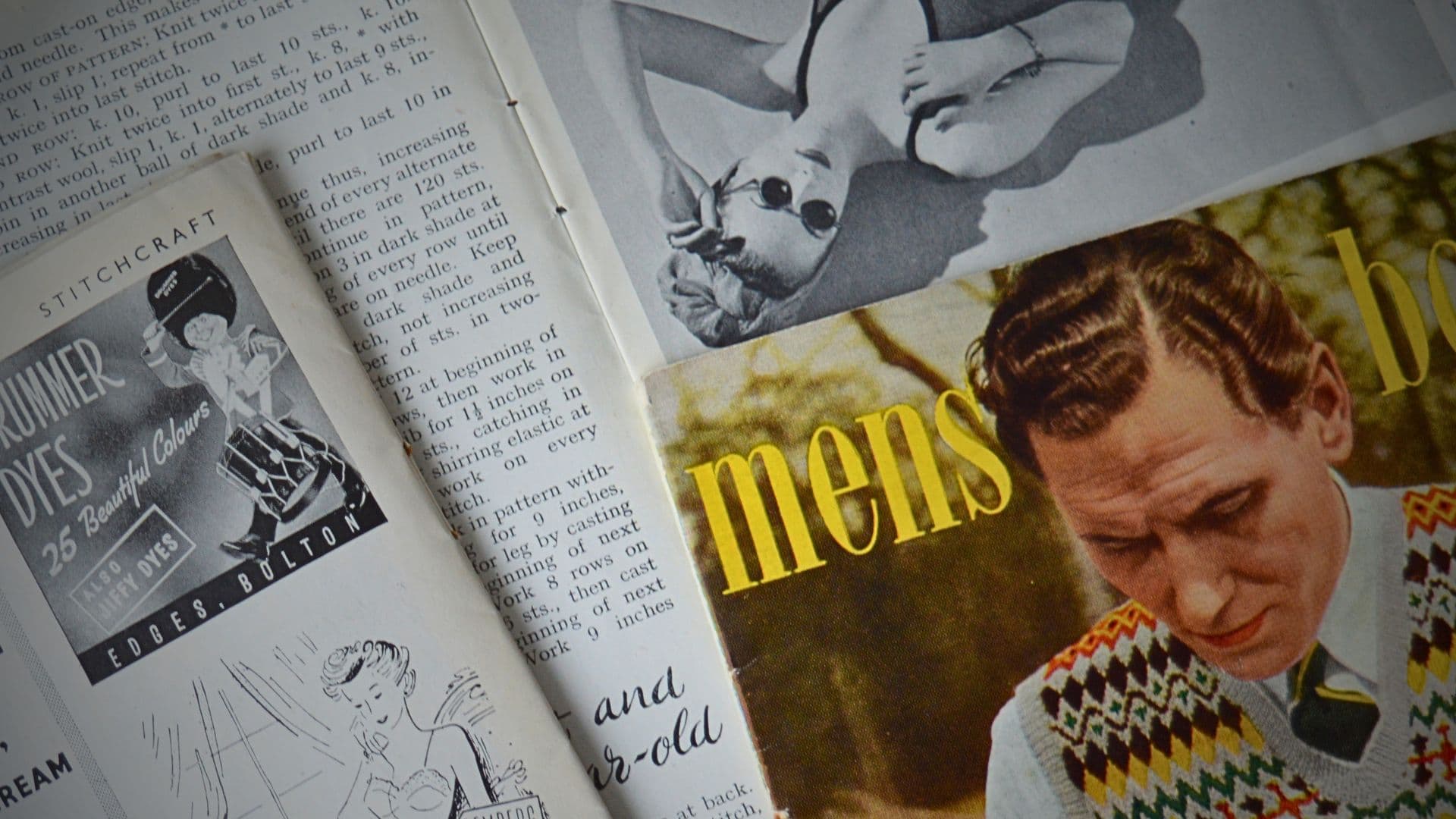
Giving yourself time
Make work which is individual to you. Everyone is informed by the work that they see around them. Think about how you absorb those influences whilst making your work your own.
Be passionate about your subject matter. It may be completely individual to you or it may be a subject matter that lots of people explore, but tackle it in your own way. You are making work for yourself. It can look any way you want.
I recommend working on several pieces at the same time. They don’t all need to be large scale. This creates a little distance between yourself and the work to allow you to consider the next steps.
Giving yourself time to consider possible developments in a piece is really important. It can also reduce the feeling that you’ve made a wrong decision or spoiled something.
Have pieces of work out or pinned up where you do your making so that you can come across them afresh. This lessens the pressure of feeling that you must finish something before starting a new piece.
It’s also worth keeping work if you think it has gone wrong. You can look back at it to make sure you recognize the problem areas and avoid them next time.
Consider how you want to present your work and explore different options.
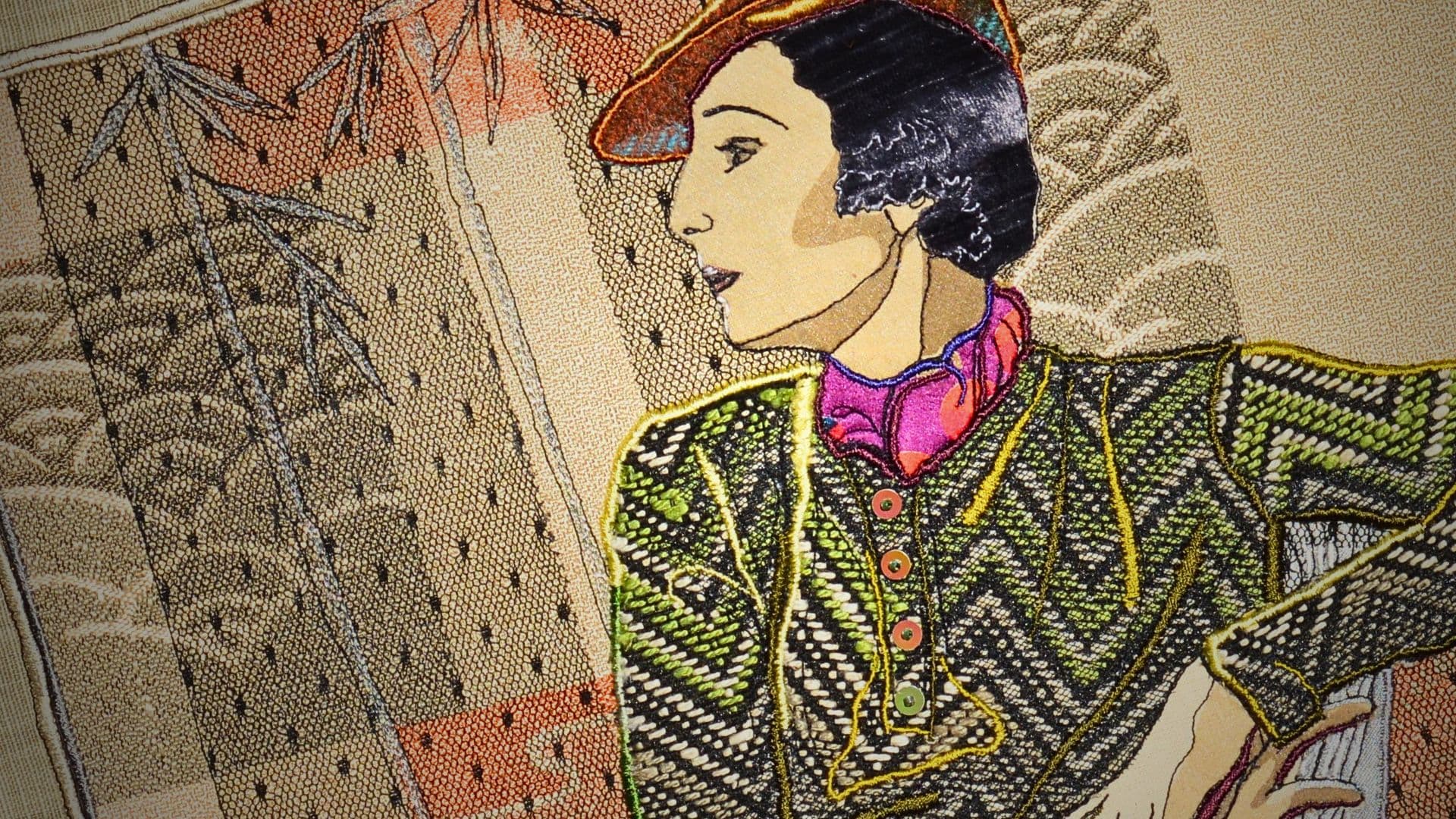
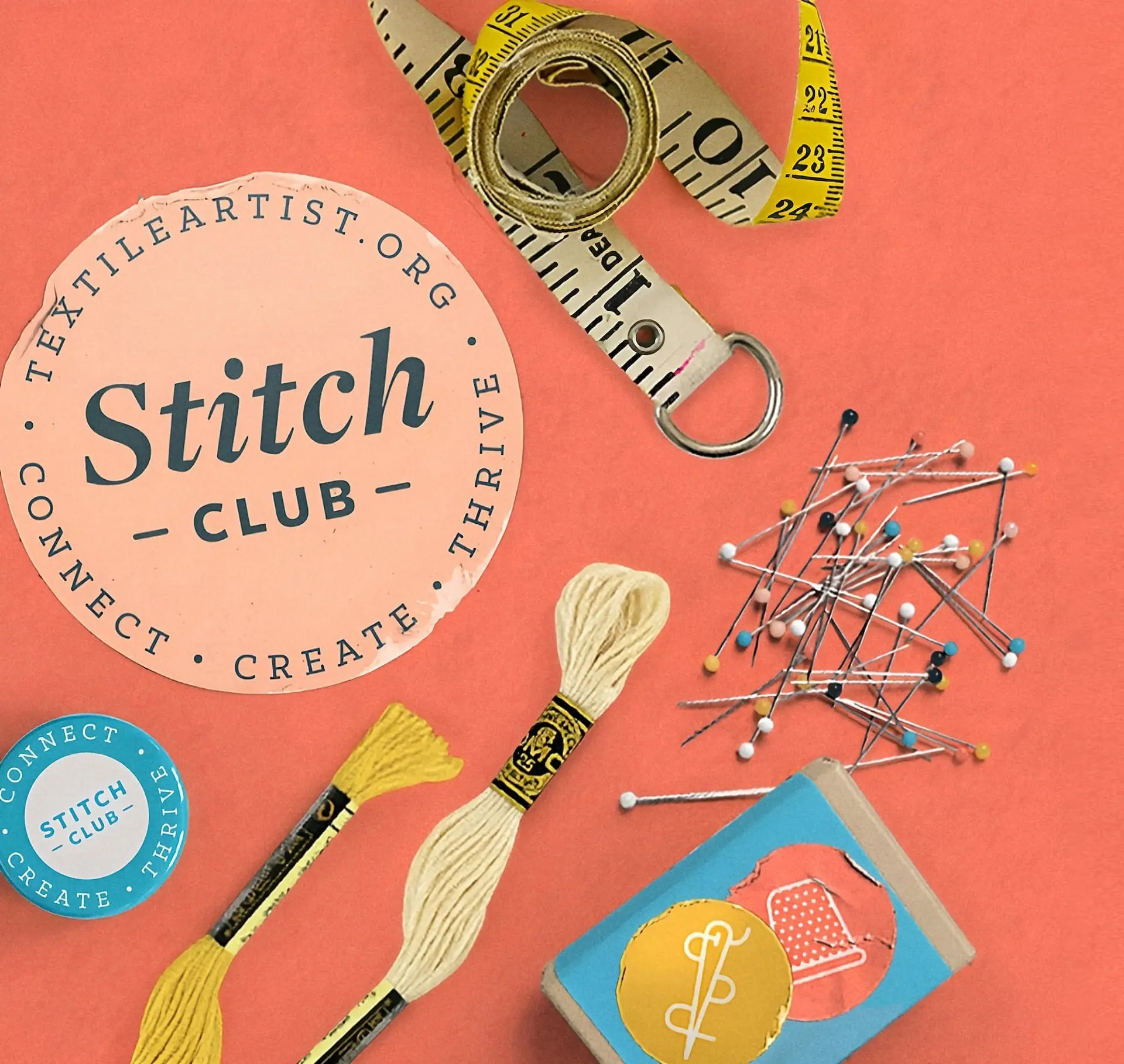
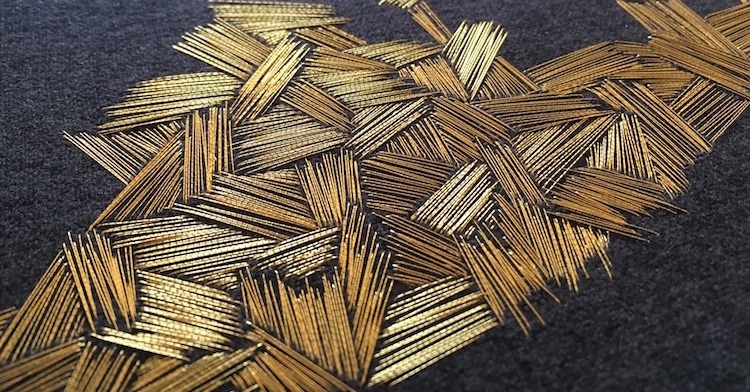
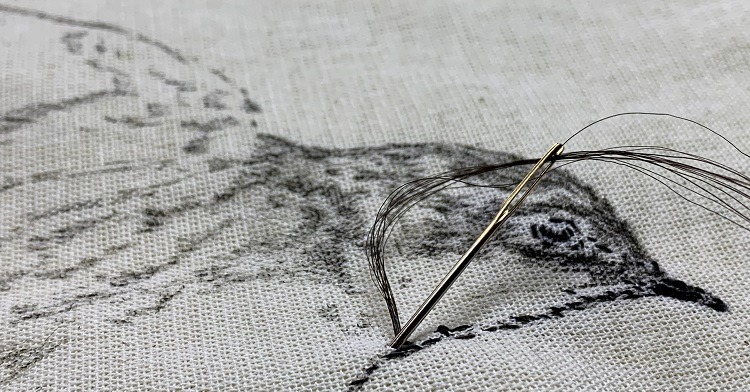
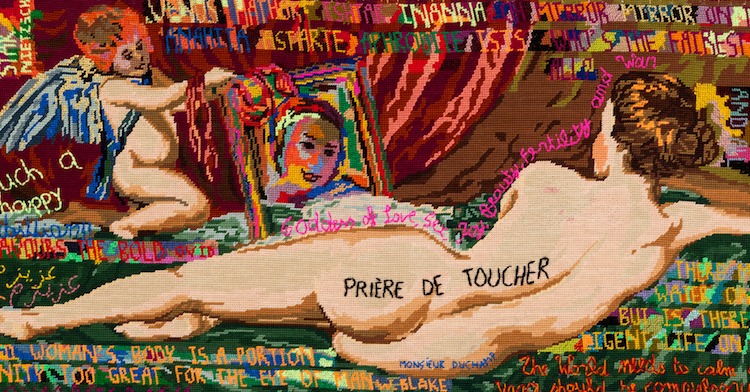
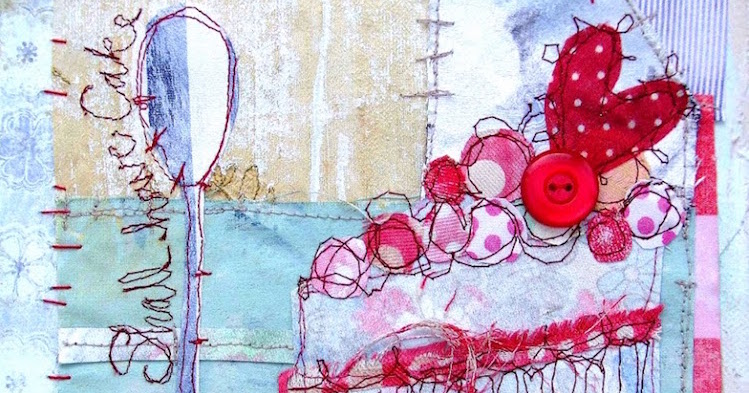
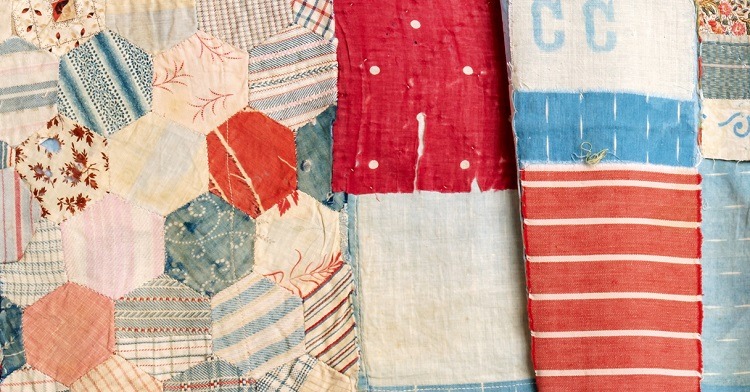
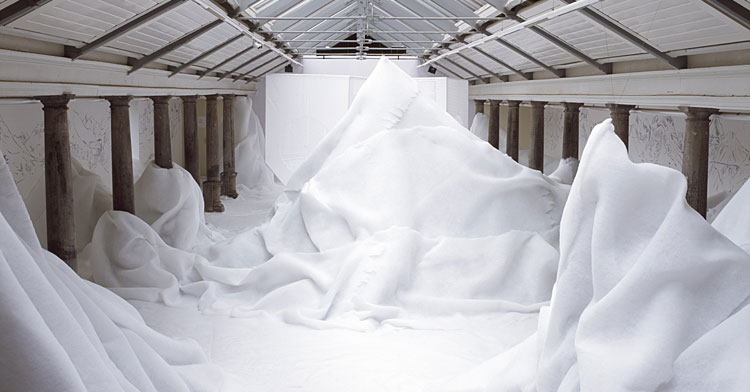
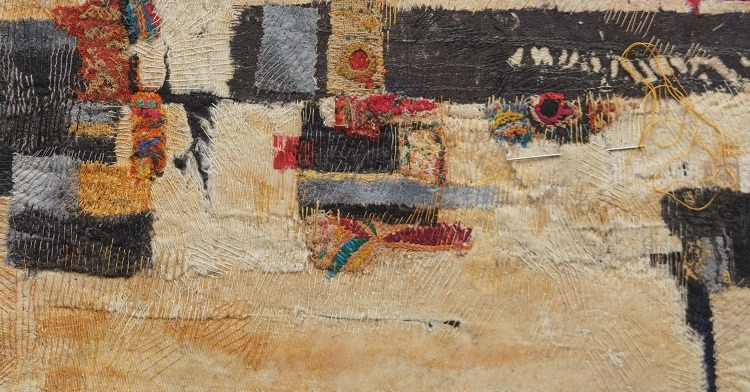
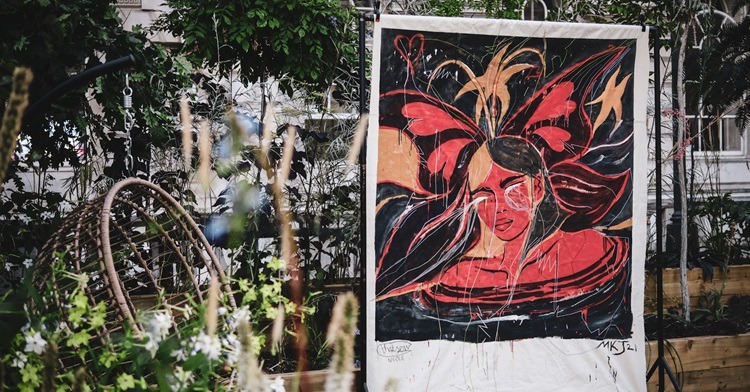
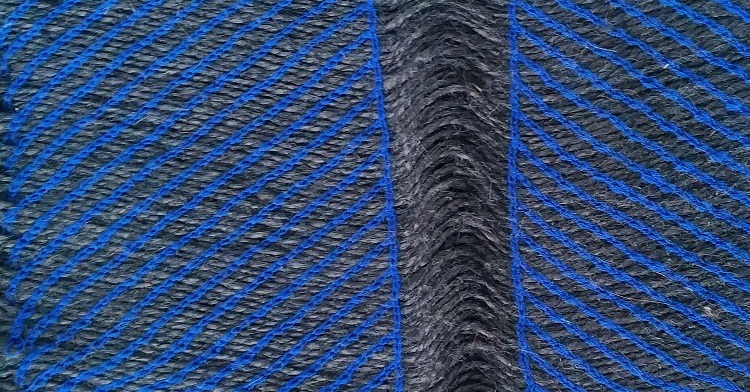
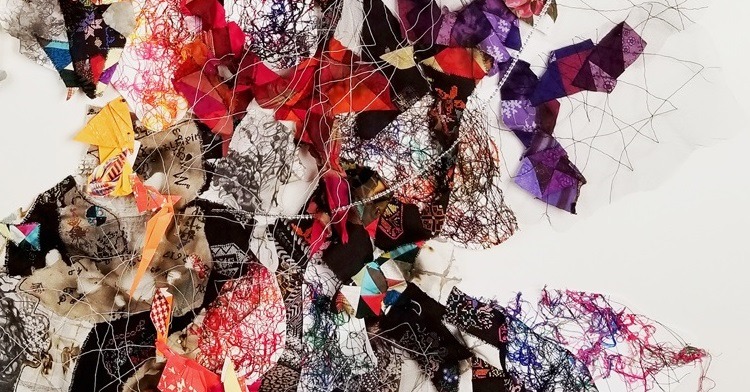
8 comments
Janet Lynch
Darren Ball’s work is absolutely beautiful bringing together many things I so admire – fashion of bygone eras and the use of many wonderful textile techniques. So evocative and inspirational. Thank you.
cre8iveSkill
Darren Ball’s work beautifully blends nostalgia with creativity through intricate stitching! His approach to textile art is truly inspiring. At Cre8iveSkill, we appreciate such craftsmanship and offer professional embroidery digitizing services to bring unique designs to life. Check us out for high-quality digitizing!
Diana Faithfull
Such amazing creativity. I love the inspiring work.
Denise Shaw
Love your work its beautiful and the kind of thing I like. I am going to try this out as I have lots of old knitting patterns and books.
Gloria Whiting
Darren’s work has inspired me to! Like his friend Janis, I’m a ceramics artist but I also love textiles. I’m hoping to find time to get my sewing machine out again. Thanks for the inspiration
Victoria
You are so talented and I
You are so talented and Inspirational! Thank you so much for your bio. I, too, love the fashion and ephemera from the 30’s and 40’s. It is a joy to see your work and be inspired by your talent. Thank you so much.
ivonne
love this work and this way of working, thank you for sharing
Patricia Jones
Darren’s work reflects his meticulous and dedicated approach to life,whether it be a textile piece,or exquisite cake. I’m lucky enough to call Darren my friend,and to own some superb examples of his art. His output is prodigious, and he just keeps getting better, and more beautiful.